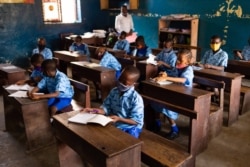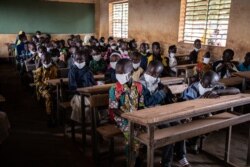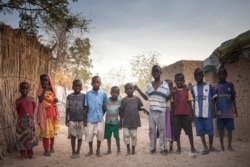Hunger and malnutrition are worsening in parts of the African continent because of the coronavirus pandemic, especially in low-income communities or those already stricken by continued conflict, according to a survey of 2,400 people in 10 African countries by the International Committee of the Red Cross (ICRC).
The survey, conducted from June to August, shows the pandemic has caused job losses and curtailed people’s ability to farm or access markets.
“The risk is that as food prices rise and people's income plummets, we could see a rise in malnutrition because families can’t afford enough food, or that the foods they can afford are less nutrient-rich,” said ICRC’s economic security analyst for Africa, Pablo Lozano.
Since the start of the pandemic, 94% of respondents reported that prices for food and other essentials in their local markets had increased, while 82% said they had lost income or revenue. Only 7% said they had enough savings to cope with a prolonged crisis.
Lozano said the survey shows people are struggling financially “in the communities in which we work, especially true among those who relied on day labor to get by or small business owners, as well as communities that were already struggling with food insecurity due to conflict or violence.”
In Western Africa, in Nigeria’s conflict-stricken northeast, the number of children treated by the outpatient nutrition program grew by 20%, while the number of severe malnutrition cases grew by 10% compared with the same period last year.
The increase in patients was recorded even though ICRC’s community outreach program has been on hold due to COVID-19. The ICRC said it is worried about the increase and predicts even more patients once work resumes.
“We are very concerned by the trend, especially in Maiduguri,” said Thomas Ndambu, ICRC nutritionist, who is “certain that when Nigerian Red Cross volunteers resume their community outreach, the number of malnutrition cases will surge.”
In nearby Burkina Faso, unabated violence despite the pandemic has displaced about 2.8 million people. These forcibly displaced people are now estimated to face crisis levels of food insecurity or worse, representing an increase of more than 200% from the same period a year ago, according to the Integrated Food Security Phase Classification System.
Mathew Kenyanjui, economic security coordinator of the ICRC in Burkina Faso, cautioned that the level of hunger is “rising dangerously due to violence, lack of access to arable land, fragile adaptation strategies, such as sales of household assets and livestock.” This situation has been compounded by the cyclical droughts and the flooding this year, he added.
UNICEF and the World Food Program reported that a survey conducted in August in 11 municipalities in Burkina Faso found 11% of children under the age of 5, and pregnant and breastfeeding women, to be suffering from moderate acute malnutrition, and 3% suffering from severe acute malnutrition.
The trend is no different in the easternmost part of the continent in Somalia. Seventeen-thousand malnourished children under the age of 5, and pregnant and breastfeeding women, were assisted in the first six months of 2020, compared with 11,900 in all of 2019. Here, too, the number is expected to climb by year-end because of a combination of violence, conflict, floods, locusts and COVID-19 complications.
In Chad, the situation has deteriorated dramatically in 2020 because of the highly volatile security situation in parts of the country that has forced people from their homes, often more than once. Exacerbating the situation is COVID-19 and climate shocks including droughts and floods. In the Lake Chad region, 65% of families in the country are estimated to live on just $2 a day.
Flooding also has compounded already staggering food insecurity and malnutrition levels in South Sudan, where more than half of the country’s 11 million people are estimated to face severe food insecurity. That is combined with protracted conflict and armed violence, which has affected livelihoods for decades and forced millions of people to flee their homes and abandon their crops. Additionally, markets often are destroyed in armed clashes, disrupting people’s access to food.
Additionally, the ICRC is concerned that if borders are closed due to COVID-19, South Sudan would face dramatic consequences and the level of food insecurity would rise significantly, given that much of the country’s food is imported.
The ICRC survey was also conducted in countries where the ICRC continues to work, including Mauritania, Niger, Cameroon, Libya, Sudan, Ethiopia, Kenya and the Democratic Republic of Congo.












